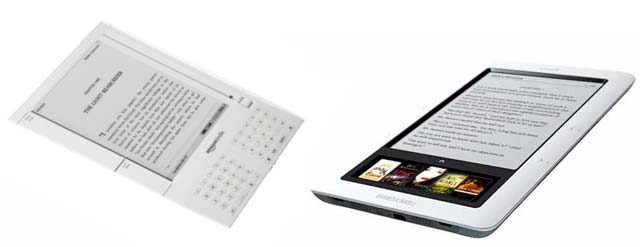Future e-Readers Could Be Made of Paper

People could one day read electronic books on displays printed on paper, for cheap, flexible and perhaps even disposable versions of the Kindle or Nook, researchers say.
In recent years, e-books and the devices used to read them have proven quite popular, with online bookseller Amazon.com reporting in July that sales of e-books for its Kindle outnumbered sales of hardcover books for the first time, noting that it sold 140 e-books for every 100 hardcovers.
At the same time, scientists are working on novel displays that aim to replicate the flexibility of paper. For instance, in September, Sony unveiled an electronic ink, or e-ink, display that could be rolled up like a newspaper.
Now engineers at the University of Cincinnati reveal that paper could be used as a flexible backing for an electronic display. In comparison, popular e-book readers such as the Kindle or iPad rely on circuits printed on rigid glass.
"We can actually use paper, a material that has been around for centuries, to make the type of devices that were invented only in the last 50 years," researcher Andrew Steckl, an electrical engineer at the University of Cincinnati, told TechNewsDaily.
Steckl and his colleagues showed that paper could serve as a platform for electrowetting, where an electric field gets applied to colored droplets, moving them about in a display in ways that can depict text, photos and video. Paper is attractive for many reasons — it is a low-cost, widely available renewable resource that is flexible and available in many shapes and sizes.
The kinds of paper they used were not the ones conventionally used in printing that absorb ink readily. Rather, the team employed water-repellant types of paper.
Sign up for the Live Science daily newsletter now
Get the world’s most fascinating discoveries delivered straight to your inbox.
"We tried many things, some of them from my wife's kitchen closet — wax paper and so on," Steckl said. "I thought glassine would be a good candidate — this is a type of paper in which postage stamps are sometime stored or displayed, or at least that's how it was done when I had a stamp collection 50 years ago. We were only able to find glassine envelopes from a store that sells wedding-related items — the envelopes are used for presenting wedding favors. So we bought a bunch and cut them up."
Most important, their preliminary experiments on several types of paper revealed the performance of such electrowetting devices were very close to that of conventional versions on glass, the gold standard in the field.
"It is pretty exciting," Steckl said. "With the right paper, the right process and the right device- fabrication technique, you can get results that are as good as you would get on glass, and our results are good enough for a video-style e-reader."
Steckl imagined a future device that can be rolled and feels like paper yet delivers books, news and even high-resolution color video in bright-light conditions.
"Nothing looks better than paper for reading," Steckl said. "We hope to have something that would actually look like paper but behave like a computer monitor in terms of its ability to store information."
Disposing of a paper-based display would also prove easier on the environment, he noted.
"We would have something that is very cheap, very fast, full-color, and at the end of the day or the end of the week, you could pitch it into the trash," Steckl said.
The aim ultimately is to fabricate electrowetting devices sandwiched between paper and thin sheets of transparent polymers. The research team's goal now is to attract commercial interest in the technology for next-stage development, which Steckl expected would take three to five years to bring to market.
Steckl and his colleagues detailed their findings in the November issue of the journal Applied Materials and Interfaces.










